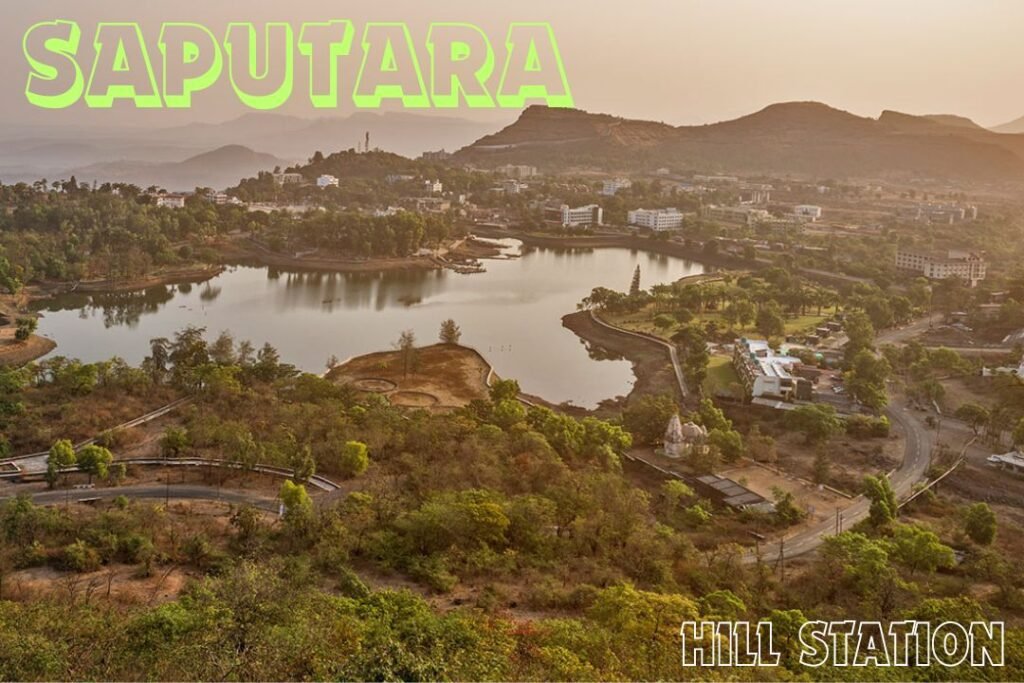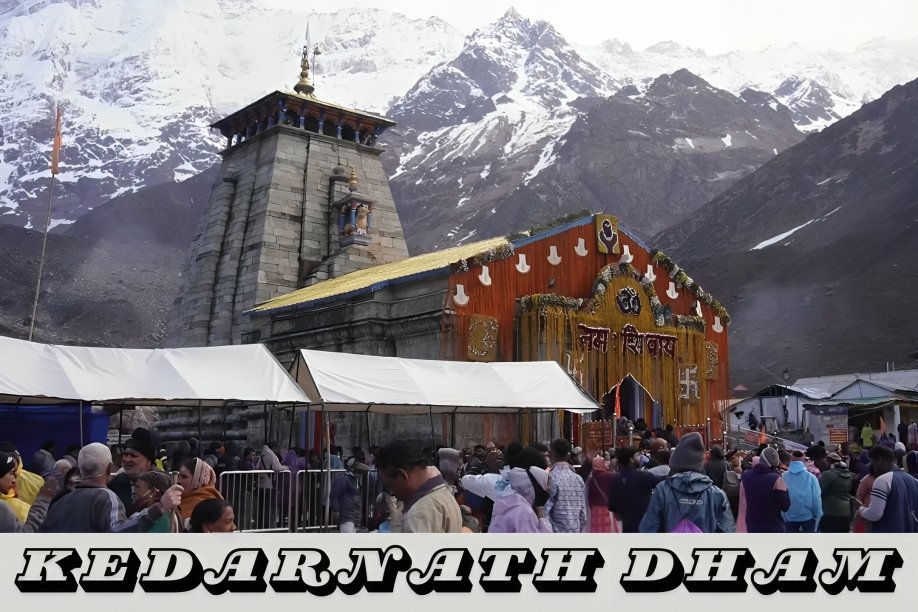Jagannath Puri, often referred to simply as Puri, is a city of immense spiritual significance located in the eastern Indian state of Odisha. It is one of the Char Dham pilgrimage sites, a must-visit destination for devout Hindus. The city is renowned for the Jagannath Temple, an ancient and revered temple dedicated to Lord Jagannath, a form of Lord Vishnu. Puri’s vibrant culture, rich history, and stunning architecture attract thousands of pilgrims and tourists from around the world.
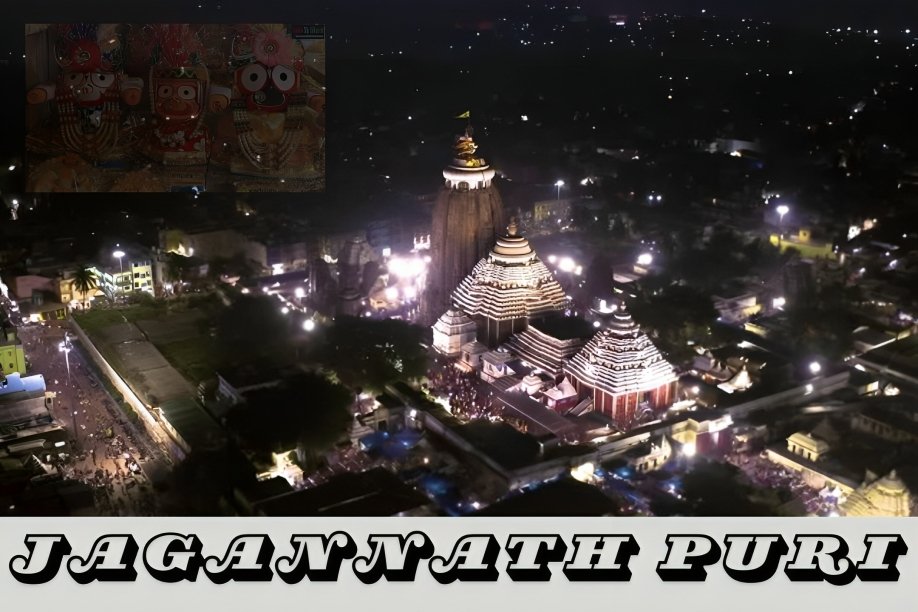
Table of Contents
Historical Background
The history of Puri dates back to ancient times, with references found in Hindu scriptures and legends. The Jagannath Temple, built in the 12th century by King Anantavarman Chodaganga Deva, stands as a testament to the city’s historical and religious significance. Over the centuries, the temple has undergone various renovations and expansions, preserving its grandeur and spiritual essence.
Early History: The history of Puri is deeply intertwined with Hindu mythology. It is believed that Lord Jagannath was originally worshipped by the tribal people of Odisha. The present temple was established in the 12th century, but the site has been a place of worship for millennia.
Medieval Period: During the medieval period, Puri was a major center of Vaishnavism. The temple attracted various rulers who contributed to its development and protection. Notable among them were the Ganga and Gajapati dynasties, who played a significant role in promoting the temple’s significance.
Colonial Era: Under British rule, Puri continued to be an important religious center. The British recognized the cultural significance of the temple and made efforts to preserve it. The city also became a focal point for various freedom movements, with leaders like Mahatma Gandhi visiting Puri.
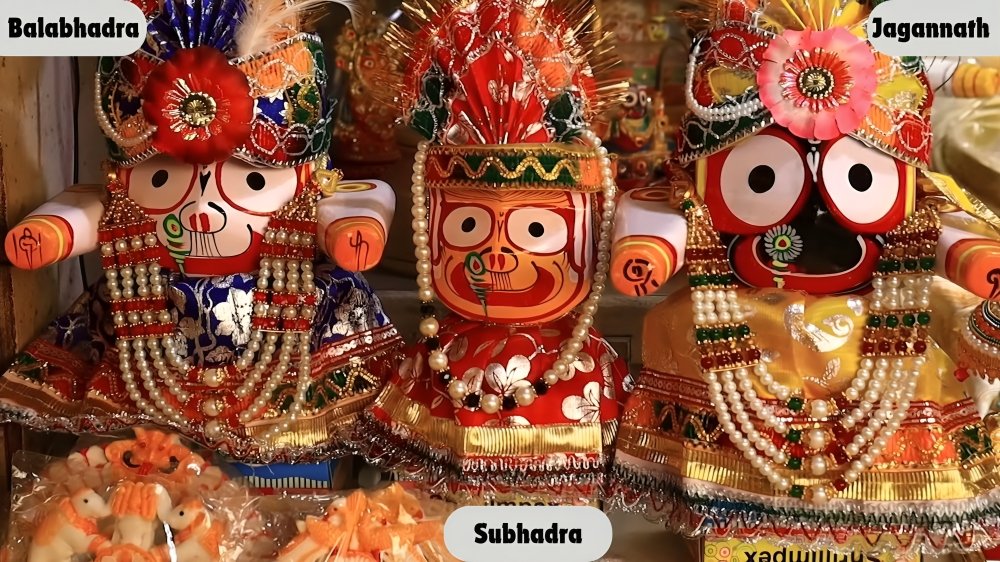
Architectural Splendor
The Jagannath Temple is a stunning example of Kalinga architecture, characterized by its towering spires, intricate carvings, and expansive courtyards. The temple complex covers an area of over 400,000 square feet and is surrounded by a high fortified wall known as Meghanada Pacheri.
Main Structure
Vimana (Sanctum Sanctorum): The main temple structure, or Vimana, stands at a height of about 65 meters and is crowned with a massive spire. Lord Jagannath, his brother Balabhadra and sister Subhadra are seated in it.
Jagamohana (Audience Hall): The Jagamohana is the audience hall where devotees gather for worship and rituals. It is embellished with beautiful carvings and sculptures.
Nata Mandir (Dancing Hall): The Nata Mandir, or dancing hall, is where traditional dance and music performances are held as offerings to the deities.
Bhoga Mandap (Offering Hall): The Bhoga Mandap is where the food offerings, or Mahaprasad, are prepared and presented to the deities.
Other Structures
Mukti Mandapa: A platform where learned Brahmins discuss religious texts and perform rituals.
Nilachakra: The blue wheel (chakra) at the top of the temple spire, made of eight different metals (astadhatu). It is considered highly sacred and is visible from afar.
Unique Features and Mysteries
The Sudarshana Chakra: The Nilachakra atop the temple is said to possess unique properties. It is visible from any point in Puri, and no matter where you stand, it appears to face you directly.
The Flag: The temple flag, known as the Patitapabana Bana, is replaced daily. It is believed that the flag always flies in the opposite direction of the wind. The task of changing the flag is performed by a temple priest who climbs the temple tower daily without any safety harness.
The Kitchen: The temple’s kitchen is considered one of the largest in the world. It has 752 stoves, and the Mahaprasad is cooked in earthen pots using traditional methods. Remarkably, the quantity of food cooked always suffices the number of devotees, irrespective of their count.
No Shadow: An architectural wonder, the main temple structure casts no shadow at any time of the day.
Festivals and Celebrations
The Jagannath Temple hosts numerous festivals throughout the year, each with its unique significance and rituals. Some of the major festivals include:
Rath Yatra: The Rath Yatra, or Chariot Festival, is the grandest celebration associated with the Jagannath Temple. Held in June or July, it commemorates the annual journey of Lord Jagannath, Balabhadra, and Subhadra to the Gundicha Temple. The massive chariots, pulled by thousands of devotees, are a sight to behold.
Snana Yatra: Snana Yatra is a bathing festival held before the Rath Yatra. The deities are brought out to the Snana Bedi (bathing platform) and given a ceremonial bath with 108 pots of water. This festival marks the beginning of the Rath Yatra preparations.
Chandan Yatra: Chandan Yatra is a 21-day festival marking the beginning of the summer season. During this festival, the deities are taken on a ceremonial boat ride in the Narendra Tank. Various water sports and rituals are performed as part of the celebrations.
Kartik Purnima: Celebrated on the full moon day of the Kartik month, this festival marks the end of the month-long worship of Lord Jagannath. Devotees light lamps and take a holy dip in the sea.
Dola Yatra: Dola Yatra, or the festival of colors, is celebrated during Holi. The deities are taken out in a procession, and devotees play with colors to mark the occasion.
Makara Sankranti: This harvest festival is celebrated with great fervor. Special offerings are made to the deities, and various rituals are performed to mark the transition of the sun into the Makara (Capricorn) zodiac sign.
Surrounding Attractions of Jagannath Puri
Rath Yatra
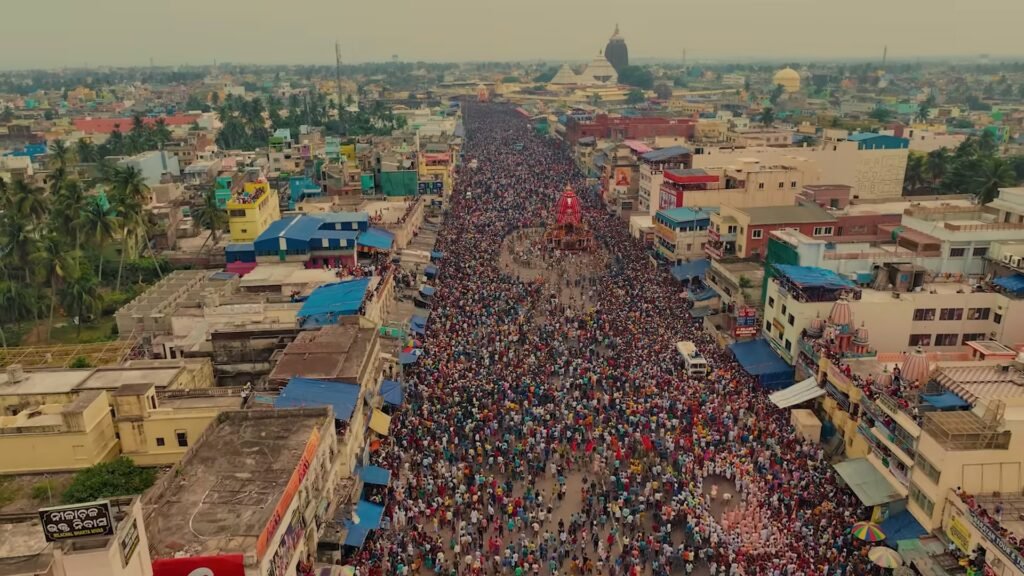
Annual Festival: The Rath Yatra, or Chariot Festival, is held annually in June or July. It commemorates the journey of Lord Jagannath, Balabhadra, and Subhadra to the Gundicha Temple.
Massive Chariots: The deities are placed in gigantic wooden chariots, beautifully decorated and pulled by thousands of devotees through the streets of Puri.
Significance: It symbolizes the return of Lord Krishna to Vrindavan and is one of the most significant festivals in Hinduism.
Participation: The festival attracts millions of pilgrims and tourists from all over the world, making it a massive gathering of faith and devotion.
Cultural Events: Alongside the procession, various cultural programs, music, and dance performances are held, showcasing the rich cultural heritage of Odisha.
Puri Beach
Scenic Beauty: Puri Beach is known for its golden sands, pristine waters, and stunning sunrises and sunsets.
Pilgrimage Spot: The beach holds religious significance as devotees take a dip in its waters before visiting the Jagannath Temple.
Festivals: It is a hub for various local festivals and cultural events, attracting tourists year-round.
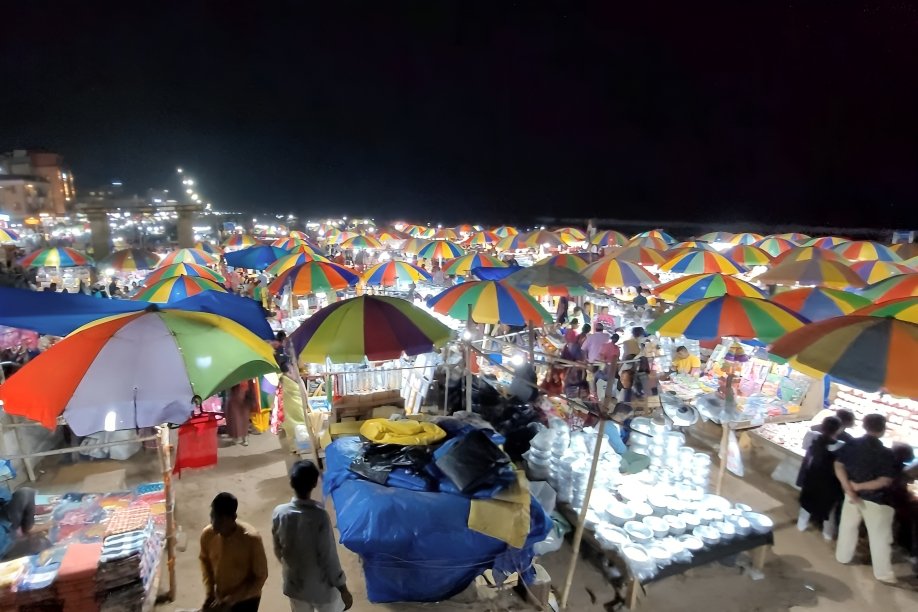
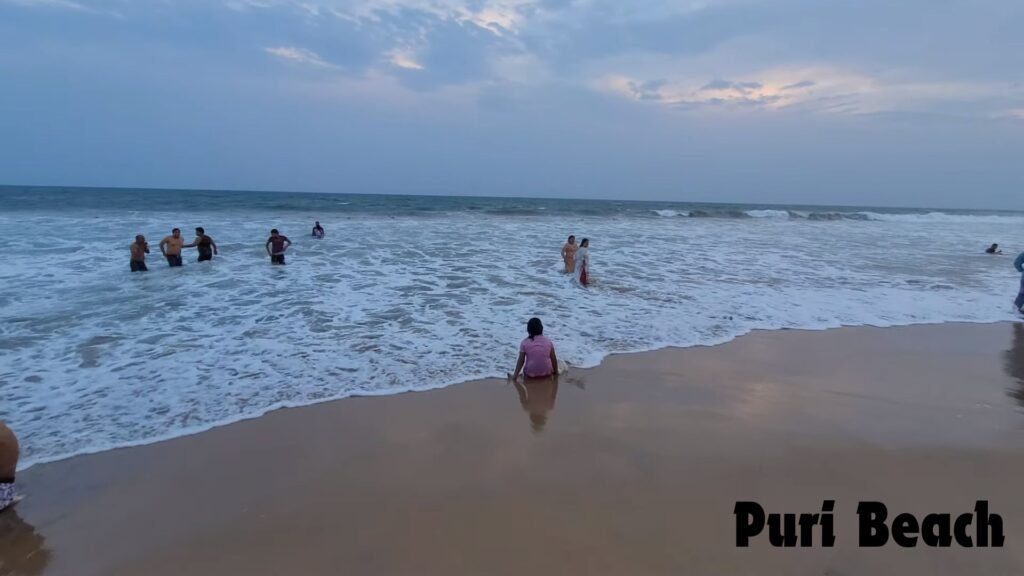
Activities: It offers a range of activities, including camel and horse rides, beach volleyball, and local seafood delicacies from the shacks.
Sand Art: The beach is famous for its annual Sand Art Festival, where artists from around the world create intricate sand sculptures.
Gundicha Temple
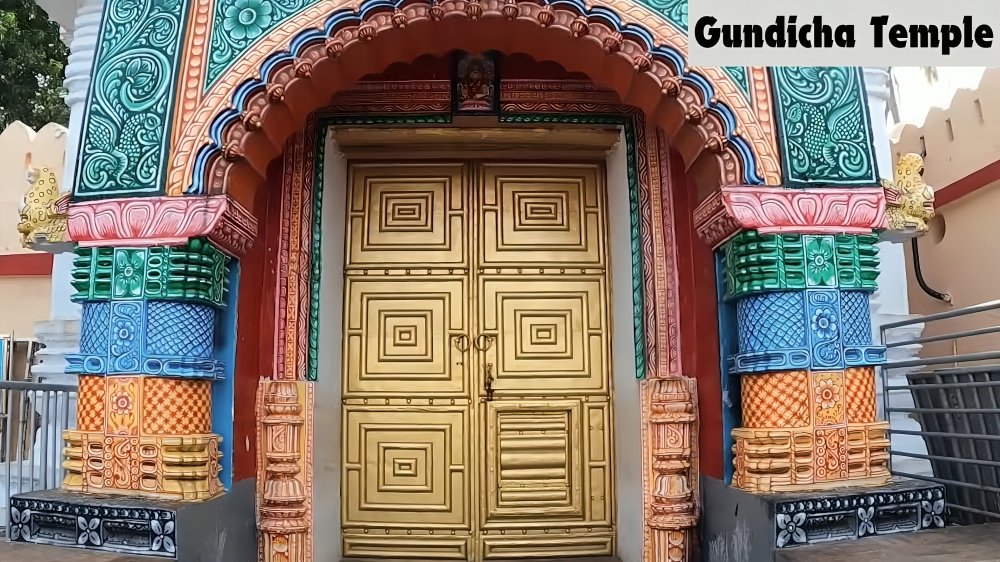
Destination of Rath Yatra: The Gundicha Temple is the final destination of the Rath Yatra, where the deities stay for seven days.
Architectural Style: The temple is built in the typical Kalinga style, featuring intricate carvings and a spacious courtyard.
Lush Gardens: Surrounded by beautiful gardens, it is also known as the Garden House of Jagannath.
Peaceful Atmosphere: The temple offers a serene and peaceful environment, attracting devotees seeking tranquility.
Mythological Significance: According to legends, it is the birthplace of Lord Jagannath’s maternal aunt, Gundicha, after whom the temple is named.
Konark Sun Temple
UNESCO World Heritage Site: The Konark Sun Temple is a UNESCO World Heritage Site, renowned for its architectural grandeur and historical significance.
Chariot Design: The temple is designed as a colossal chariot with intricately carved stone 8 wheels, walls, and pillars.
Dedicated to Sun God: It is dedicated to Surya, the Sun God, and reflects the peak of Kalinga architecture.
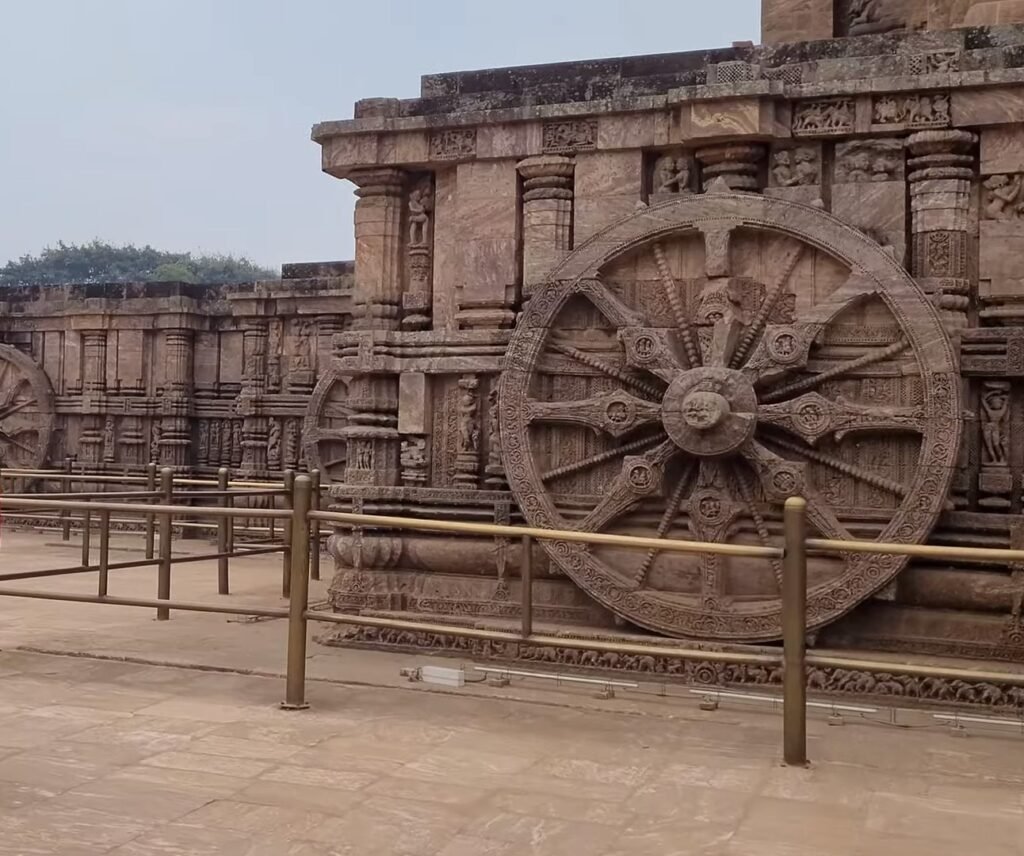
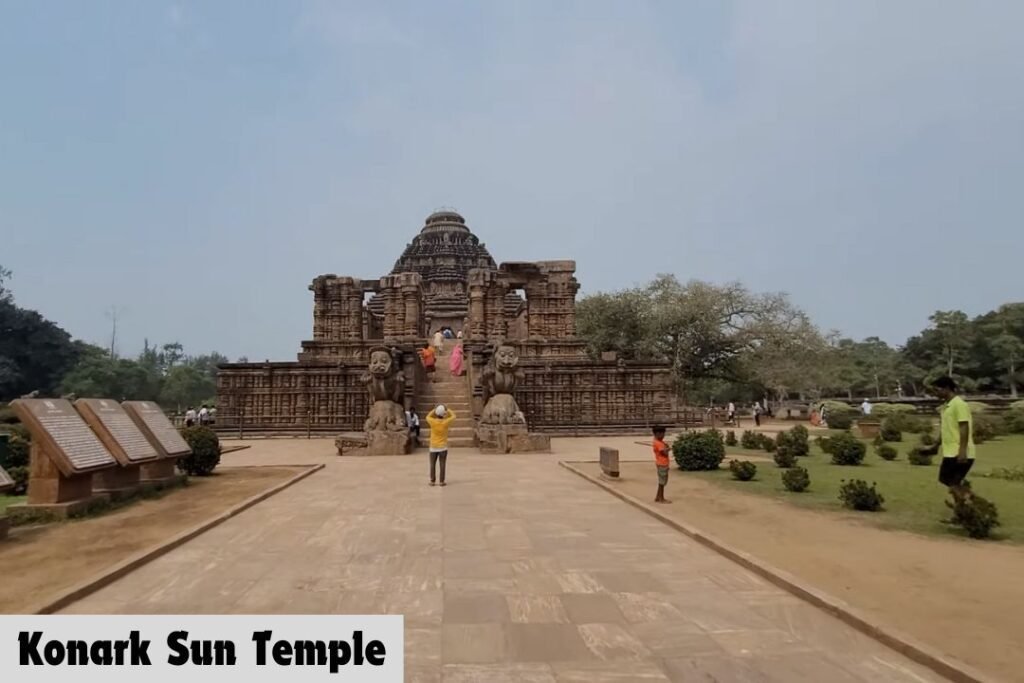
Erotic Sculptures: The temple walls are adorned with detailed carvings, including many erotic sculptures depicting scenes from everyday life.
Cultural Hub: The site hosts the annual Konark Dance Festival, celebrating classical Indian dance forms and attracting artists from around the world.
Chandrabhaga Beach
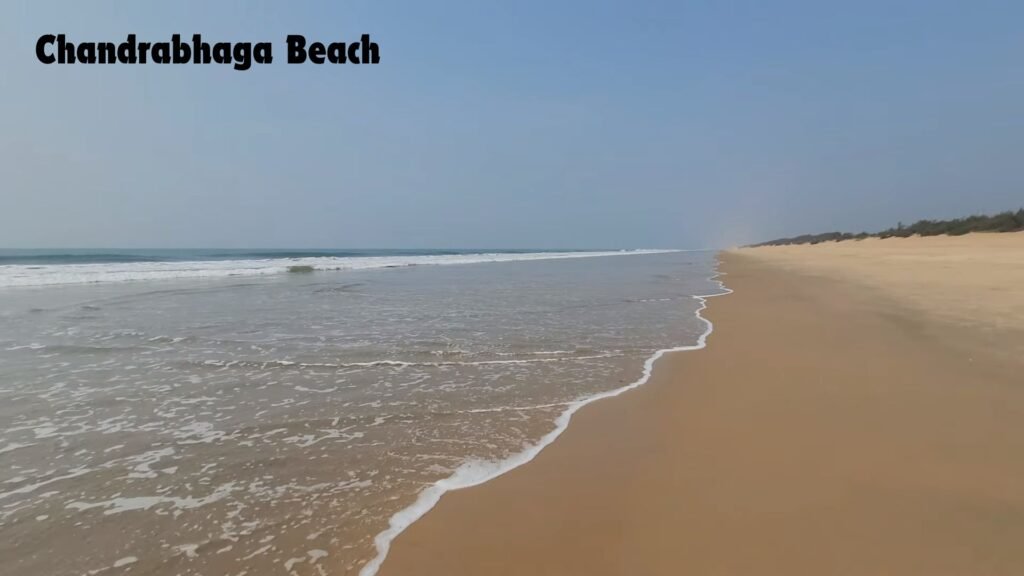
Close to Konark: Located near the Konark Sun Temple, Chandrabhaga Beach is known for its scenic beauty and tranquil environment.
Mythological Significance: It is believed to be the site where the Sun God offered prayers to Lord Krishna, adding a spiritual aspect to the beach.
Cleanliness: Known for its cleanliness and serene surroundings, making it an ideal spot for relaxation and picnics.
Eco-Friendly: The beach has won the Blue Flag certification for its eco-friendly practices and safety standards.
Festivals: It hosts the annual International Sand Art Festival and the Konark Festival, which showcases classical dance forms.
Dhauli Giri
Historical Significance: Dhauli Giri is the site of the Kalinga War, which led to Emperor Ashoka’s conversion to Buddhism.
Shanti Stupa: It features the Shanti Stupa (Peace Pagoda), built by the Japan Buddha Sangha and the Kalinga Nippon Buddha Sangha.
Ashokan Edicts: The site has rock edicts inscribed by Emperor Ashoka, promoting non-violence and Buddhism.

Panoramic Views: Dhauli Giri offers stunning panoramic views of the Daya River and surrounding landscape.
Buddhist Influence: It is a major Buddhist pilgrimage site, with numerous statues and stupas dedicated to Buddha.
Lingaraj Temple
Oldest Temple: The Lingaraj Temple is one of the oldest temples in Bhubaneswar, dating back to the 11th century.
Architectural Marvel: It is an excellent example of Kalinga architecture, with intricate carvings and towering spires.
Dedicated to Shiva: The temple is dedicated to Lord Shiva, worshipped here as Harihara, a combined form of Vishnu and Shiva.

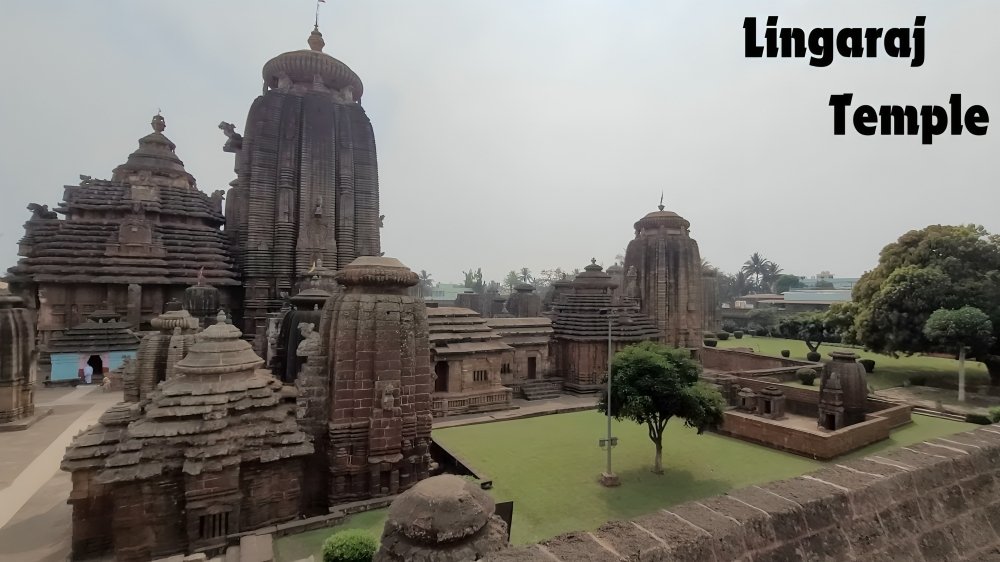
Bhubaneswar Landmark: It is a major landmark in Bhubaneswar, attracting thousands of devotees and tourists.
Annual Festival: The temple hosts the annual chariot festival, Rukuna Rath Yatra, drawing large crowds.
Mukteshwar Temple
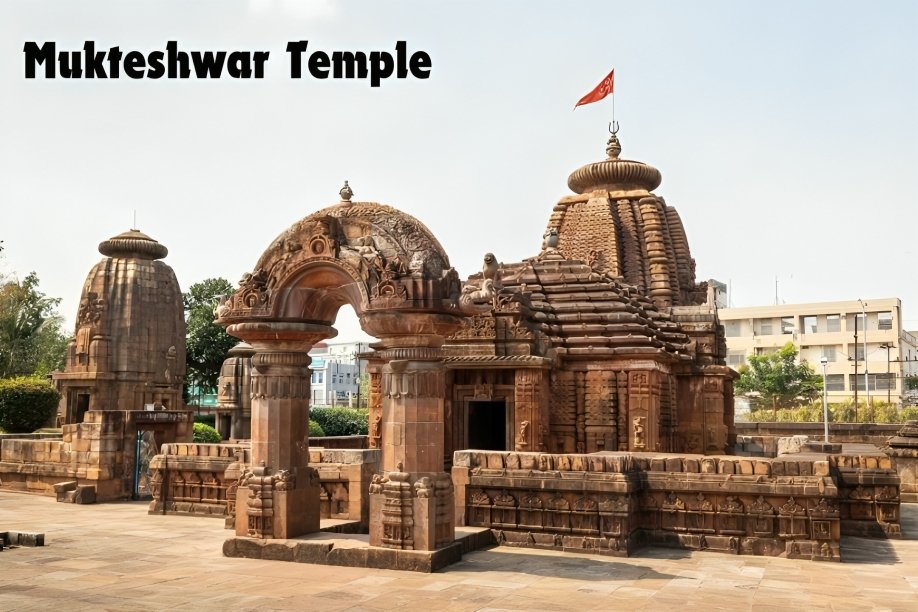
Gem of Kalinga Architecture: The Mukteshwar Temple is known as the “Gem of Kalinga Architecture” due to its exquisite carvings and beautiful proportions.
Torana: It features a unique arched gateway (torana), which is a masterpiece of sculptural art.
Dedicated to Shiva: The temple is dedicated to Lord Shiva and is an important pilgrimage site.
Iconic Sculptures: The temple walls are adorned with intricate carvings depicting scenes from Hindu mythology.
Serene Environment: The temple’s tranquil surroundings and lush gardens make it a peaceful place for meditation and prayer.
Siddheshwar Temple
Historic Temple: The Siddheshwar Temple is a significant historic temple dedicated to Lord Shiva.
Kalinga Architecture: It features traditional Kalinga architectural style, with beautifully carved stone structures.
Spiritual Significance: The temple is an important pilgrimage site for devotees of Lord Shiva.
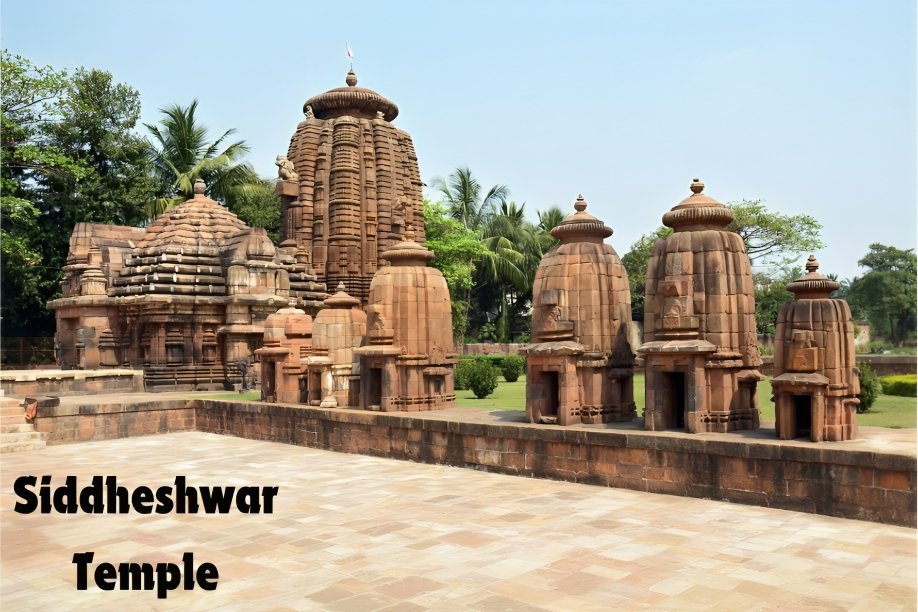
Annual Festivals: It hosts several annual festivals, including Maha Shivaratri, attracting large numbers of devotees.
Local Devotion: It is a major center of worship for the local community, with daily rituals and offerings.
Udayagiri & Khandagiri Caves
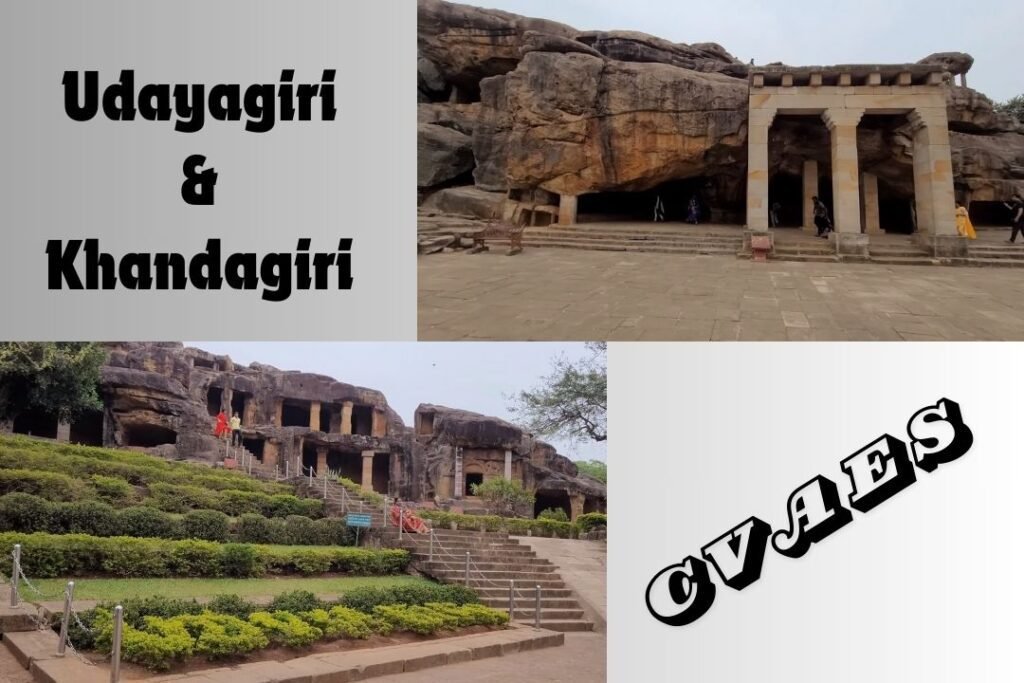
Ancient Caves: The Udayagiri and Khandagiri Caves are a group of ancient rock-cut caves dating back to the 1st century BCE.
Jain Monuments: These caves were carved out for Jain monks and are significant Jain pilgrimage sites.
Historical Inscriptions: The caves contain inscriptions and carvings that provide valuable insights into ancient Jain practices and the reign of King Kharavela.
Architectural Marvel: The caves feature intricate carvings and elaborate sculptures depicting various scenes and deities.
Panoramic Views: The hilltop location of the caves offers stunning panoramic views of the surrounding landscape.
Nandankanan Zoo
Large Zoological Park: Nandankanan Zoo is one of the largest zoological parks in India, spread over an area of 437 hectares.
Diverse Wildlife: The zoo is home to a wide variety of animals, including white tigers, Asiatic lions, and Indian pangolins.
Botanical Garden: It also features a botanical garden with a diverse collection of plants and trees.
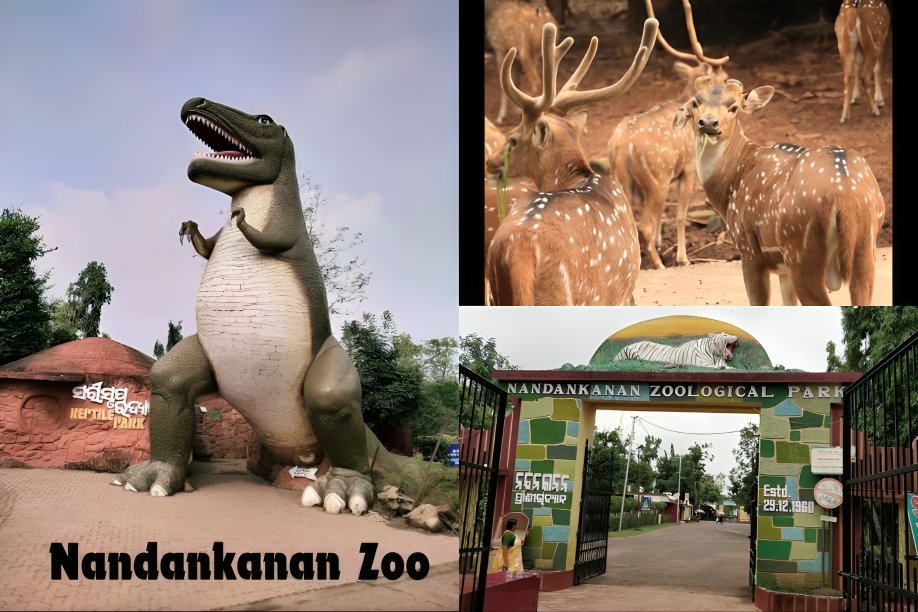
Safari Rides: Visitors can enjoy safari rides to see animals like tigers and lions in their natural habitats.
Conservation Efforts: The zoo is involved in various conservation and breeding programs for endangered species.
Chilika Lake
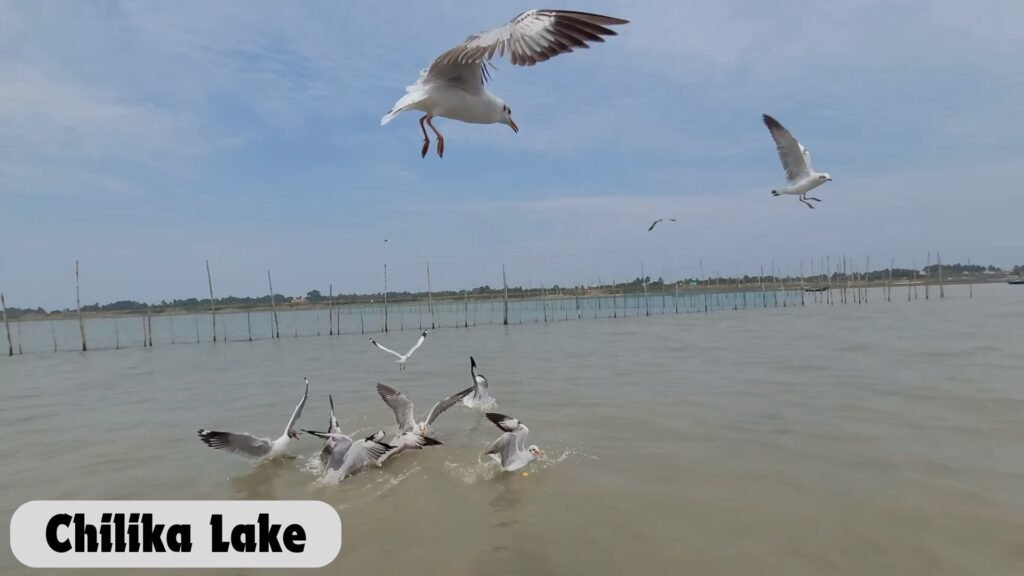
Dolphin Spotting: The lake is famous for its population of Irrawaddy dolphins, and boat rides offer a chance to spot these playful creatures.
Scenic Islands: The lake has several small islands, including Kalijai Island, which is known for its temple and folklore.
Fishing Communities: Chilika Lake supports a vibrant fishing community, and visitors can experience the local culture and cuisine.
Largest Brackish Water Lagoon: Asia’s largest brackish water lagoon lake is Lake Chilika, covering an area of over 1,100 square km.
Bird Sanctuary: It is a bird sanctuary and a haven for birdwatchers, especially during the migratory season.
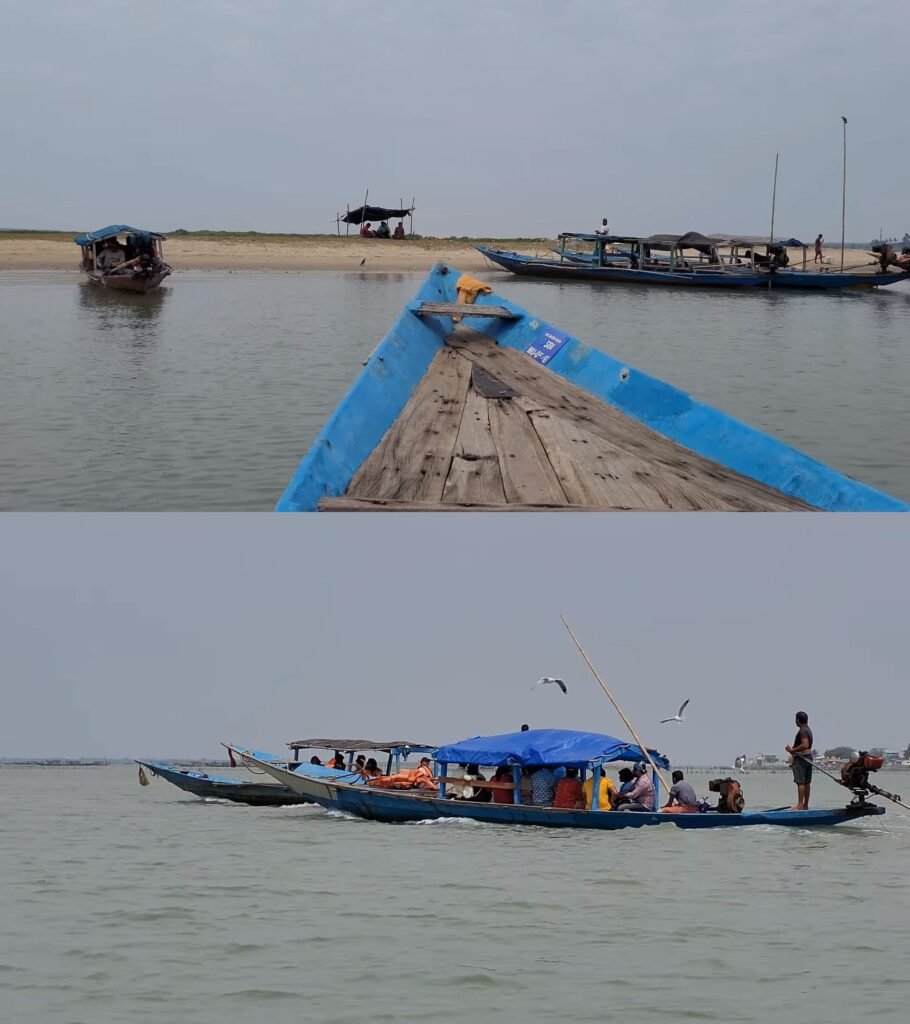
Narsingh Temple
Dedicated to Lord Narasimha: The Narsingh Temple is dedicated to Lord Narasimha, an incarnation of Lord Vishnu.
Historic Significance: The temple is an important religious site with historical and mythological significance.
Architectural Style: It features traditional Kalinga architecture with intricate carvings and sculptures.
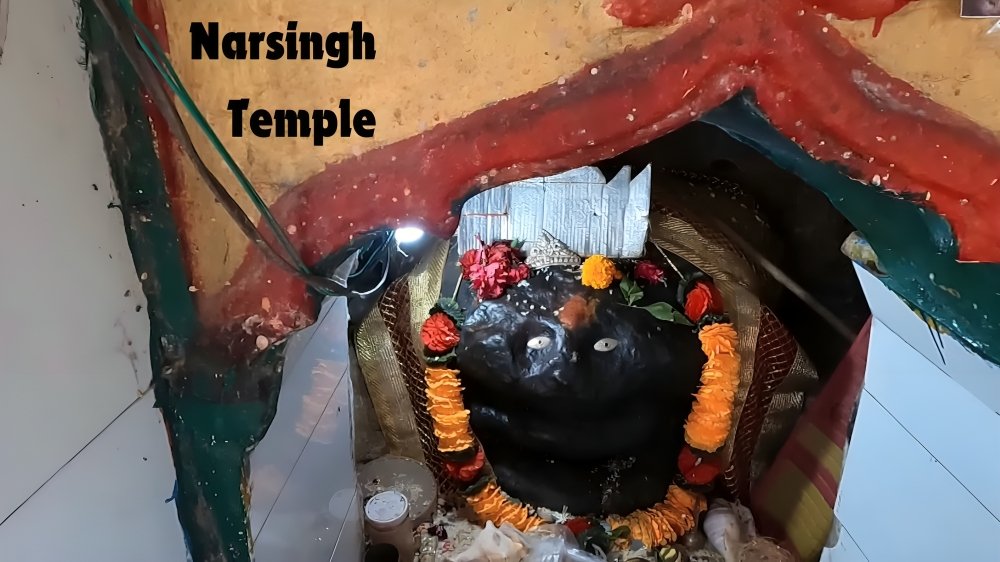
Annual Festivals: The temple hosts several annual festivals, including Narasimha Jayanti, attracting devotees from all over.
Spiritual Atmosphere: The temple’s serene and spiritual atmosphere makes it a peaceful place for worship and meditation.
Sakshi Gopal Temple
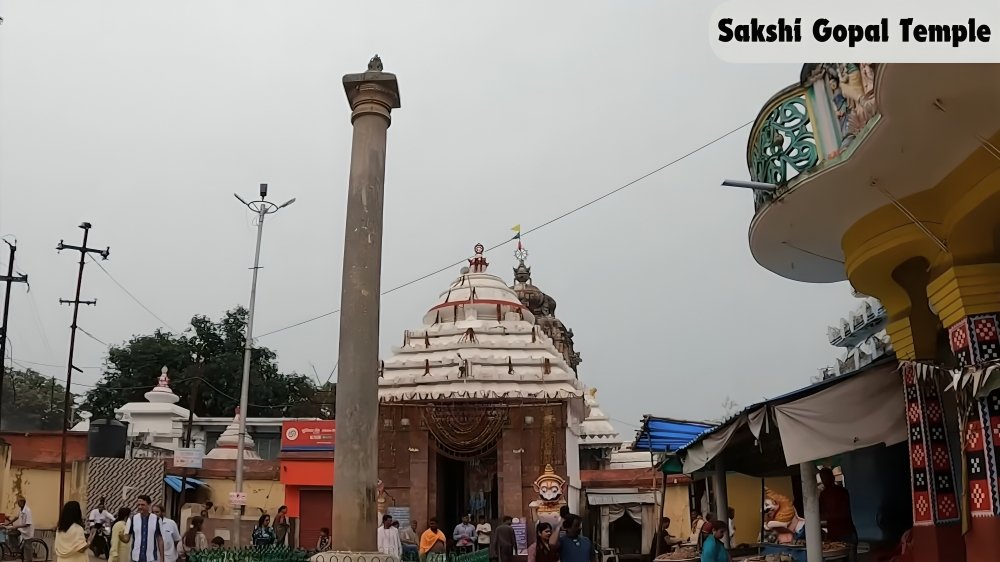
Legendary Temple: The Sakshi Gopal Temple is based on a legend where Lord Krishna testified as a witness (Sakshi) to a devotee’s promise.
Architectural Beauty: The temple showcases traditional Kalinga architecture with beautifully carved.
Historical Importance: It holds historical significance as a place where devotees come to fulfill vows and seek blessings from Lord Krishna as Sakshi Gopal.
Devotee Pilgrimage: The temple attracts devotees from various parts of India, especially those who believe in the divine witness of Lord Krishna.
Local Customs: Visitors often offer prayers and perform rituals such as offering garlands, fruits, and sweets to seek the blessings of Lord Sakshi Gopal.
Loknath Temple
Dedicated to Lord Shiva: The Loknath Temple is dedicated to Lord Shiva and is one of the prominent temples in Puri.
Spiritual Hub: It serves as a spiritual hub for devotees of Lord Shiva, who come here to seek blessings and spiritual fulfillment.
Architectural Splendor: The temple features traditional Odisha architectural style, with intricate carvings and sculptures depicting various Hindu deities.

Annual Festivals: The temple hosts several festivals throughout the year, including Maha Shivaratri, which attracts large numbers of devotees.
Peaceful Environment: Known for its tranquil surroundings and devotional atmosphere, the Loknath Temple offers a serene space for meditation and prayer.
How to Reach
By Air
Nearest Airport: The nearest airport to Puri is Biju Patnaik International Airport in Bhubaneswar, approximately 60 km away.
Flights: The airport is well-connected to major cities across India, including Delhi, Mumbai, Kolkata, Chennai, and Bangalore. International flights also connect Bhubaneswar to destinations like Bangkok and Kuala Lumpur.
Transfers: From the airport, you can hire a taxi, book a private car, or use shuttle services to reach Puri. The journey by road takes about 1.5 to 2 hours.
By Train
Puri Railway Station: Puri has its own railway station, well-connected to major cities like Delhi, Kolkata, Chennai, and Mumbai. The station is located within the city and is easily accessible.
Major Trains: Some popular trains include Purushottam Express, Puri-Howrah Express, and Neelachal Express.
By Road
Highway Connectivity: Puri is well-connected by road via National Highway 316. The highway links Puri to Bhubaneswar and other major cities in Odisha and neighboring states.
Bus Services: Regular bus services, including state-run and private buses, operate between Puri and cities like Bhubaneswar, Cuttack, and Kolkata.
Car Rentals: You can also hire a private taxi or rent a car for a more comfortable and flexible journey. Several car rental agencies operate in Bhubaneswar and Puri.
By Sea
Sea Route: Although there are no direct passenger sea routes to Puri, the nearby Paradip Port serves as a significant maritime gateway. However, this is not a common route for travelers.
Local Ferries: For a unique experience, you can explore local boat services on Chilika Lake, though this is more for tourism than transportation.
Local Transport in Puri
Auto Rickshaws: Auto rickshaws are a common mode of transport within Puri.
Cycle Rickshaws: For a more leisurely ride, cycle rickshaws are available and can navigate through narrow streets and crowded areas.
Buses: The city has a local bus service that connects major points of interest, including the Jagannath Temple, Puri Beach, and the railway station.
Bicycle and Bike Rentals: Renting a bicycle or a motorbike is a popular option for tourists who want to explore the city at their own pace.
Taxis and Cabs: For more comfort and privacy, you can hire a taxi or use app-based cab services available in the city.
Accommodations
Luxury Hotels
- Mayfair Heritage, Puri: Located on Chakratirtha Road.
- Rath Resort & Spa: Located on New Marine Drive Road.
- Toshali Sands: Located on Konark Marine Drive.
Mid-Range Hotels
- Hotel Holiday Resort: Located on Chakratirtha Road.
- Stirling Puri: Located on Marine Drive Road.
- Hans Coco Palms: Located on Swargadwar Road.
Budget Hotels
- Hotel Sonar Bangla: Located on New Marine Drive Road.
- Hotel Gandhar: Located on Chakratirtha Road.
- Z Hotel: Located on Sea Beach Road.
Guest Houses and Homestays
- Niladri Beach Resort: Located on Marine Drive Road.
- Sai Resort: Located on Chakratirtha Road.
- Ananya Resorts: Located on VIP Road.
Local Cuisine of Jagannath Puri
Traditional Dishes
Pakhala Bhata: Fermented rice dish typically consumed with fried or mashed vegetables and fish. It’s considered a staple in many Odia households. Known for its cooling effect, especially during hot summer months.
Chenna Poda: A unique dessert made from fresh cottage cheese, sugar, and cardamom, baked until it turns golden brown. Often referred to as the “cheese cake” of Odisha, with a distinct caramelized flavor.
Dalma: A nutritious and hearty dish made from lentils and mixed vegetables, flavored with spices like cumin and mustard seeds. Served as a main course, often accompanied by rice or roti.
Santula: A healthy and light vegetable curry made with a variety of vegetables, cooked with minimal spices.
Ghugni: A spicy and tangy snack made from yellow peas or white peas, cooked with onions, tomatoes, and a blend of spices.
Temple Prasadam
Mahaprasad: The holy offering from Jagannath Temple, consisting of a variety of vegetarian dishes cooked without onion and garlic. The food is prepared in earthen pots and is considered sacred, believed to be blessed by Lord Jagannath.
Kheeri: A sweet rice pudding made from rice, milk, and sugar, often flavored with cardamom and garnished with dry fruits. Part of the temple’s Mahaprasad, it is widely loved for its rich and creamy texture.
Nadia Pakhala: Fermented rice with coconut, typically served as part of the Mahaprasad. Known for its unique blend of flavors and cooling properties.
Street Food
Gupchup: Also known as Pani Puri or Golgappa, these crispy hollow puris are filled with spicy tamarind water, potatoes, and chickpeas. A popular street food enjoyed for its tangy and spicy taste.
Alu Dum: A spicy potato curry often served with Puri (deep-fried bread) or as a filling for Gupchup. Known for its rich, flavorful gravy and tender potatoes.
Chhena Jalebi: A sweet dish made from fresh chhena (cottage cheese) shaped into coils, deep-fried, and soaked in sugar syrup.: Offers a unique twist on the traditional jalebi with its soft and chewy texture.
Seafood Delicacies
Chingudi Malai Curry: A rich and creamy prawn curry made with coconut milk, spices, and herbs. Known for its luxurious taste and creamy texture, often served with rice.
Macha Ghanta: A fish curry prepared with fish head and mixed vegetables, seasoned with traditional spices. A favorite among locals for its hearty and robust flavors.
Bhendi Bhaja: Crispy fried fish seasoned with turmeric and spices, served as a side dish or appetizer. Loved for its crunchy texture and spicy taste.
Sweets and Desserts
Rasabali: Deep-fried flattened cheese balls soaked in thickened, sweetened milk. Known for its rich flavor and soft texture.
Chhena Gaja: A sweet dish made from chhena (cottage cheese), kneaded and shaped into rectangular pieces, fried, and then soaked in sugar syrup. Combines the sweetness of syrup with the rich taste of cheese.
Khaja: A crispy, layered pastry soaked in sugar syrup, often offered as part of the temple’s Mahaprasad. Popular for its crunchy texture and sweet taste.
Travel Tips and Safety Advice
Plan Your Visit During Festivals: If possible, plan your visit during major festivals like Rath Yatra to experience the vibrant cultural and religious celebrations. However, be prepared for large crowds and make accommodation reservations well in advance.
Dress Modestly: When visiting temples, dress modestly. Devotees should wear clothes covering their shoulders and knees when they go to the temple for darshan. This shows respect for the local customs and religious feelings.
Photography Guidelines: Be mindful of photography rules, especially in temples. Many temples, including the Jagannath Temple, do not allow photography inside the premises. Always ask permission before taking photos of locals and their belongings, and respect their privacy.
Stay Hydrated: Puri can get quite hot and humid, especially during the summer. Always carry water with you and stay hydrated. Choose bottled water to avoid any water related problems.
Try Local Cuisine: Don’t miss out on trying the local Odia cuisine. Visit popular restaurants and street food stalls, but make sure the food is freshly prepared to avoid any health issues.
Carry Cash: While there are ATMs available, it’s advisable to carry some cash, especially for small purchases, tips, and at places where card payments might not be accepted.
Book Accommodation in Advance: Puri is a popular tourist destination, so it’s best to book your accommodation well in advance, especially during peak tourist seasons and festivals.
Respect local customs: Be respectful of local customs and traditions. Avoid touching religious artifacts and follow the instructions provided at the temples.
Beware of Pickpockets: Puri attracts a lot of tourists, making it a hotspot for pickpockets. Keep your belongings secure and be cautious in crowded areas, especially during festivals and at the beach.
Avoid Late Night Travel: It’s advisable to avoid traveling late at night, especially if you are alone. Stick to well-lit and populated areas.
Health Precautions: Carry basic medicines for common ailments like headaches, stomach issues, and colds. If you have any chronic conditions, keep your medications handy.
Follow Beach Safety Guidelines: If you plan to swim at Puri Beach, follow the safety guidelines provided by lifeguards. Be aware of the strong currents and avoid swimming too far from the shore.
Stay Informed About Weather Conditions: Puri is prone to cyclones and heavy rains, especially during the monsoon season. Stay updated on the weather forecast and avoid visiting during adverse weather conditions.
Secure Your Accommodation: Ensure your accommodation is secure and has good reviews regarding safety. Use the hotel safe to store valuables and important documents.
Respect Wildlife: If you visit natural sites like Chilika Lake or Nandankanan Zoo, respect the wildlife. Do not feed animals or disturb their natural habitat.
Follow Temple Etiquette: When visiting temples, follow the local etiquette. Remove your shoes before entering, and do not photograph the deity unless explicitly allowed.
Conclusion
Jagannath Puri is a destination that offers a perfect blend of spirituality, culture, and natural beauty. Whether you are a pilgrim seeking blessings, a history enthusiast exploring ancient architecture, or a traveler looking for a serene beach getaway, Puri has something to offer for everyone. A visit to the Jagannath Temple is a journey into the heart of India’s divine and enchanting heritage.
So plan your visit to this holy city with GujjuTraveling and immerse yourself in its divine and enchanting aura. Stay connected with GujjuTraveling for information about new places.

Frequently Asked Questions (FAQs)
What can be the best time to visit Jagannath Puri?
The best time to visit Puri is between October and February when the weather is pleasant and suitable for sightseeing. The Rath Yatra festival in June or July is also a significant event that attracts many visitors.
How do I reach Jagannath Puri?
By Air: The nearest airport is Biju Patnaik International Airport in Bhubaneswar, around 60 km from Puri. From there, you can reach Puri by taxi or bus.
By Train: Puri is well-connected by train to major cities in India. The Puri Railway Station is close to the city center.
By Road: Puri is accessible via NH316 from Bhubaneswar and other nearby cities.
What are the main attractions in Puri?
Jagannath Temple
Puri Beach
Gundicha Temple
Loknath Temple
Chilika Lake
Sakshi Gopal Temple
Is photography allowed in Jagannath Temple?
No, photography inside the Jagannath temple is strictly prohibited. Visitors should respect this rule and refrain from taking any pictures within the temple premises.
Is there any dress code to visit Jagannath temple?
Yes, visitors are expected to dress modestly when visiting the Jagannath Temple. Devotees, both men and women, should wear clothes covering their shoulders and knees. Traditional Indian attire is preferred.
What is the significance of Ratha Yatra festival in India?
The Rath Yatra is one of the most important festivals in Puri, celebrating the annual journey of Lord Jagannath, Lord Balabhadra, and Goddess Subhadra to the Gundicha Temple. It is a festival attracting millions of devotees and tourists from all over the world.
Can non-Hindus enter the Jagannath Temple?
No, entry to the Jagannath Temple is restricted to Hindus only. Non-Hindus can visit the temple from the roof of the nearby Raghunandan Library.
What are some local dishes to try in Puri?
Pakhala Bhata
Chenna Poda
Dalma
Ghugni
Kheeri (part of Mahaprasad)
Is it safe to swim at Puri Beach?
Yes, it is generally safe to swim at Puri Beach, but it’s advisable to follow safety guidelines provided by lifeguards and avoid swimming too far from the shore due to strong currents.
Are there any shopping areas in Puri?
Yes, some popular shopping areas include:
Swargadwar Market: Known for handicrafts, seashell products, and local textiles.
Utkalika: A government-run store offering authentic Odia handicrafts and textiles.
How can I ensure my safety while visiting Puri?
Stay hydrated and carry bottled water.
Beware of pickpockets in crowded areas.
Avoid traveling late at night.
Follow beach safety guidelines.
Respect local customs and dress modestly.

